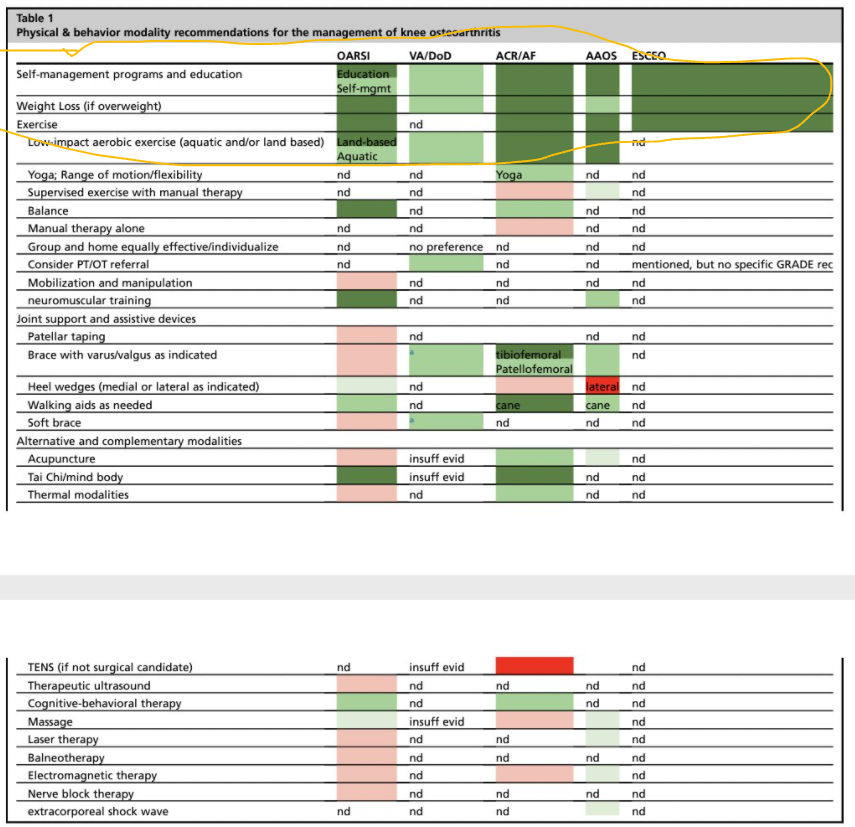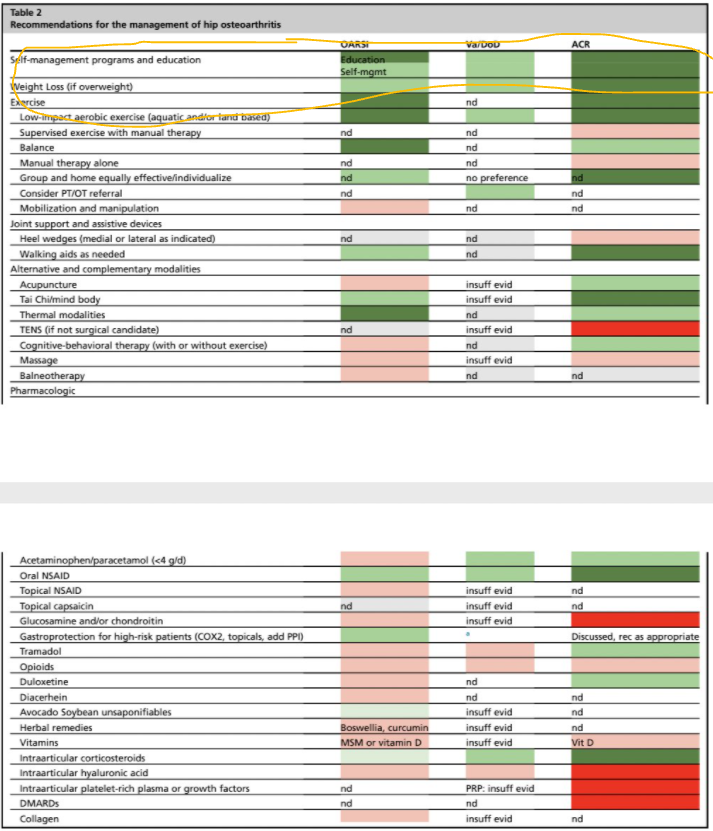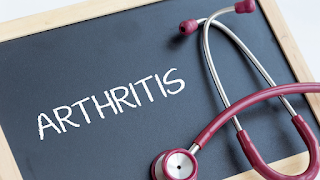Best Practices for Hip and Knee OA Includes Dietary Interventions
By Dr. Sean M. Wells, DPT, PT, OCS, CNPT, ATC/L, CSCS, NSCA-CPT, Cert-DN
A few months back a major article was published regarding osteoarthritis treatment guidelines from 6 major professional organizations. Physical therapists (PTs), athletic trainers (ATs), occupational therapists (OTs), and Physicians use these professional guidelines to help direct our care. As many of us know, OA can lead to great loss of function, increased pain, and higher expenses. As such, having the most current and best evidence is vitally important to helping our patients move better, have less pain, and reduce costs.
For years the mainstay treatment in physical therapy has been exercise and manual therapy. Obviously these treatments depend on the specific joint, as many DPTs often use aquatic therapy to help with hip osteoarthritis. Lately the utilization of dry needling has helped patients with knee OA. The use of other therapies like non-steroidal anti-inflammatory drugs (NSAIDs) and corticosteroid injections have been questioned more, although their utilization still exists.
Looking at this new publication it's clear that physical therapists need to be engaging their patients with hip and knee osteoarthritis in the discussion of weight loss. The professional organizations included in this article's analysis includes the American Academy of Orthopedic Surgeons, the Veterans Affairs / Department of Defense,The American College of Rheumatology, and the European Society for Clinical and Economic Aspects of OA. Take a look at these two tables and see what the authors’ recommendations are for knee and hip OA, particularly the ones encircled:

 |
Clearly the best practices for hip and knee OA include education around weight loss. Such guidance is also consistent with the JOSPT Clinical Practice Guidelines for hip OA. Most data show that in order to achieve weight loss, patients need to focus on dietary changes. Dietary modifications contribute to 60-80% of weight loss, despite PTs and fitness gurus thinking that exercise contributes the most. Much of the benefits of weight loss for clients with OA comes not just in the mechanical unloading of the joints but also the reduction in inflammation and improved metabolic functioning.
It's apparent, from this research, that exercise is also important for hip and knee OA – but perhaps we need to talk more about the fork than the barbell?
If you like what you see here then know there is more in our 3 board-approved continuing education courses on Nutrition specific for Physical Therapists. Enroll today in our new bundled course offering and save 20%, a value of $60!
- NEW - Online Discussion Group
- Live cases
- webinars
- lecture
- Live Q&A
- over 600 videos - hundreds of techniques and more!
- Check out MMT Insiders

















Post a Comment
Post a Comment